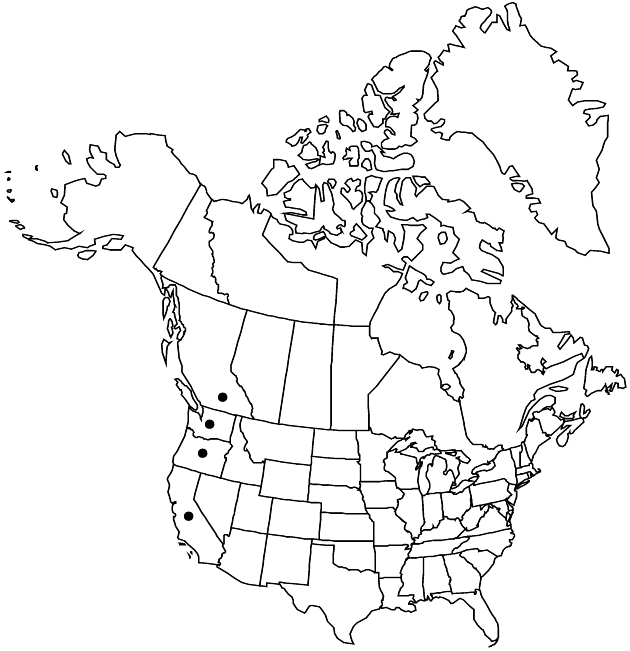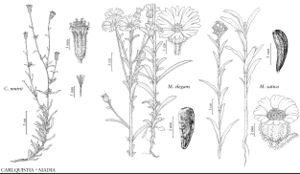Madia sativa
Sag. Stor. Nat. Chili, 136. 1782.
Plants (0.3–) 35–100 (–240) cm, self-compatible (heads not showy). Stems hirsute and glandular-pubescent, glands yellowish, purple, or black, lateral branches rarely surpassing main-stems. Leaf-blades broadly lanceolate to linear-oblong or linear, 2–18 cm × 3–18 (–29) mm. Heads in usually crowded, paniculiform, racemiform, or spiciform arrays. Involucres ovoid to urceolate, 6–16 mm. Phyllaries hirsute and glandular-pubescent, glands yellowish, purple, or black, apices erect or ± reflexed, flat. Paleae mostly persistent, connate 1/2+ their lengths. Ray-florets (5–) 8–13; corollas greenish yellow or sometimes purplish red abaxially or throughout, laminae 1.5–4 mm. Disc-florets 11–14, bisexual, fertile; corollas 2–5 mm, pubescent; anthers ± dark purple. Ray cypselae black or brown, sometimes mottled, dull, compressed, beakless. Disc cypselae similar. 2n = 32.
Phenology: Flowering May–Oct.
Habitat: Grasslands, openings in shrublands and woods, disturbed sites, stream banks, roadsides
Elevation: 0–1000 m
Distribution

B.C., Calif., Oreg., Wash., South America (Argentina), South America (Chile), Pacific Islands (Hawaii), Pacific Islands (probably )
Discussion
In North America, Madia sativa occurs on the Pacific Coast from California to British Columbia, sporadically in coastal ranges, and rarely eastward. Reports of M. sativa from Ontario and Quebec and from Alaska, Connecticut, Georgia, Idaho, Indiana, Iowa, Maine, Maryland, Massachusetts, New York, North Carolina, Pennsylvania, Vermont, and Wisconsin are putative waifs or misidentified M. glomerata. Molecular data and greenhouse studies have indicated that plants referable to M. capitata and M. sativa in California are not distinct (B. G. Baldwin, unpubl.). Sampled populations of M. sativa (including M. capitata) from California are somewhat divergent in DNA sequences from sampled Chilean populations, in apparent conflict with earlier suggestions that M. sativa was recently introduced to North America from South America by Europeans (Baldwin, unpubl.). Madia sativa has been cultivated for seed-oil in South America, Europe, Africa, and Asia Minor (E. Zardini 1992).
Selected References
None.
